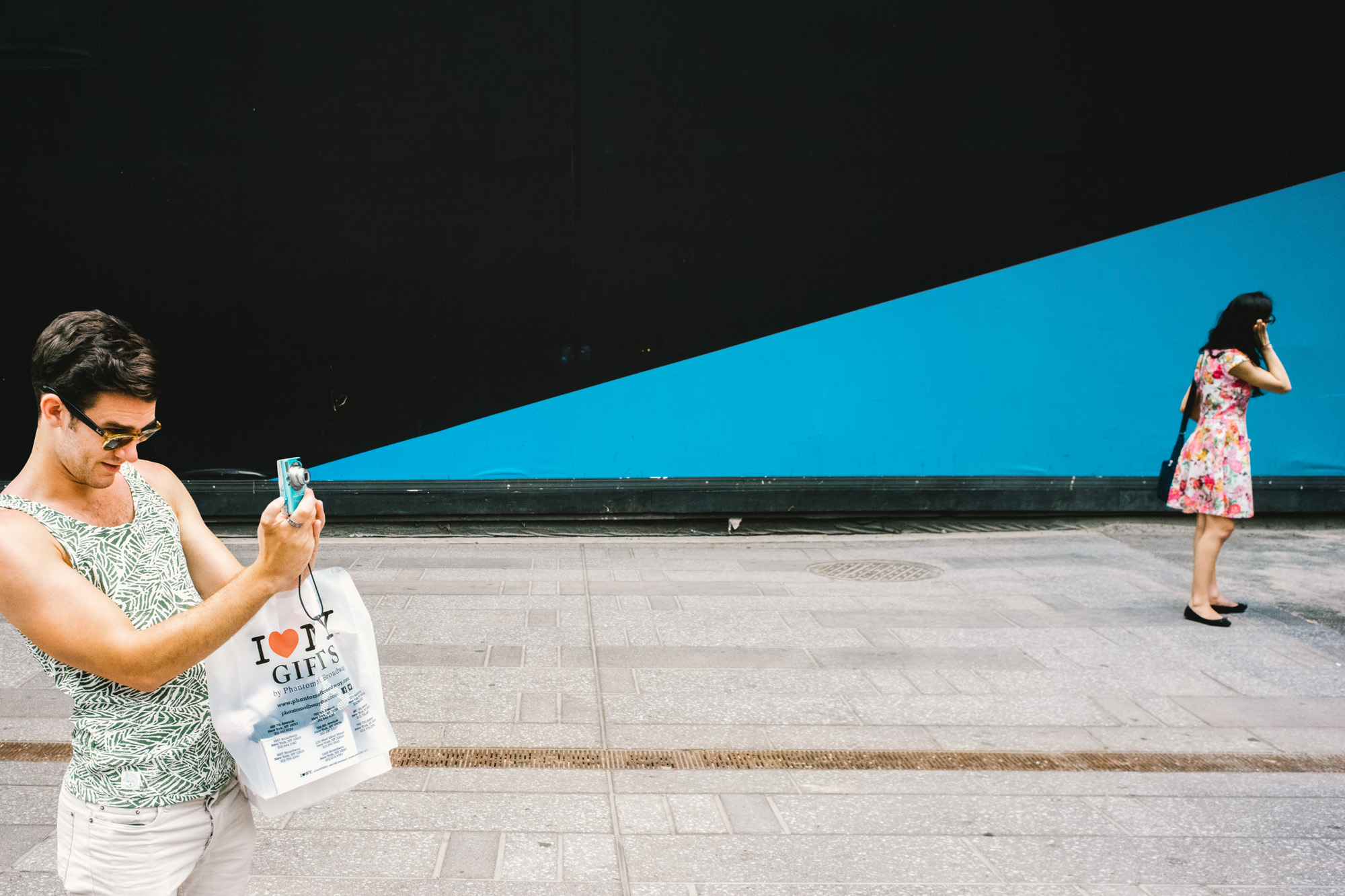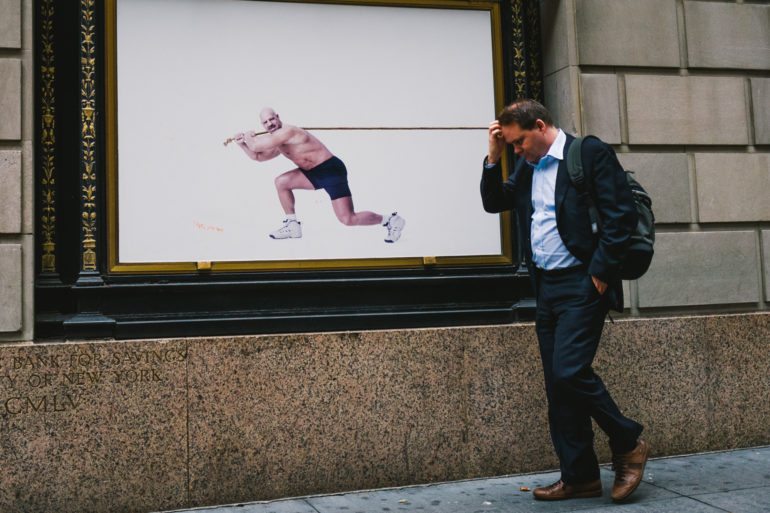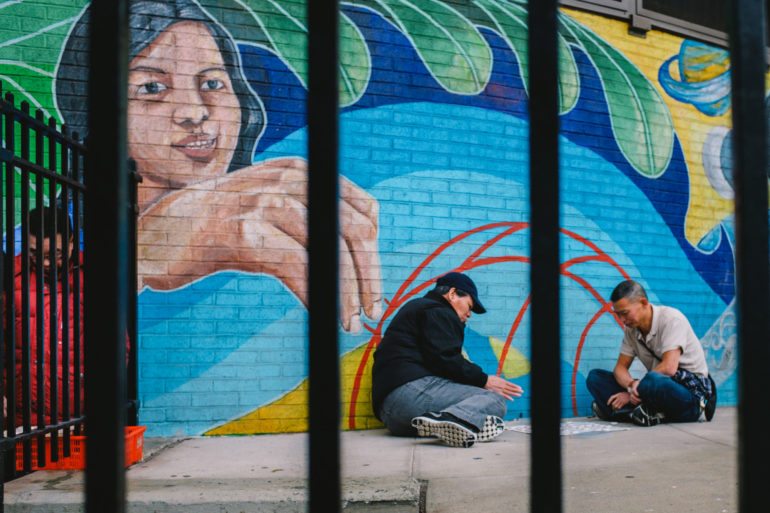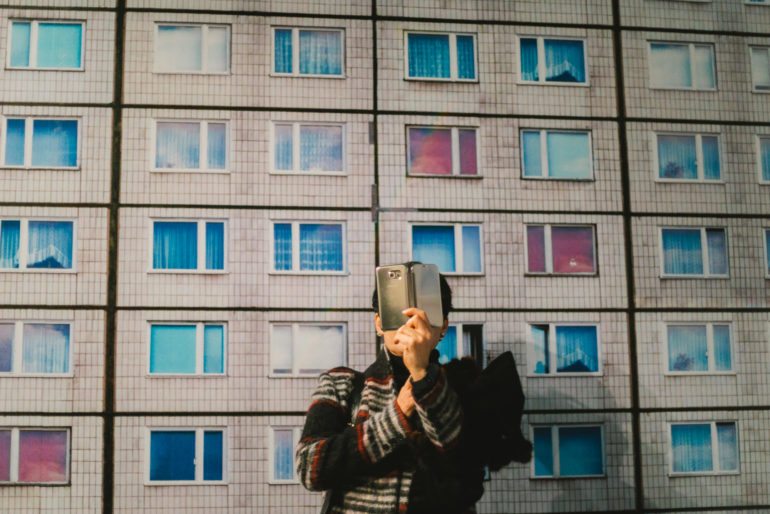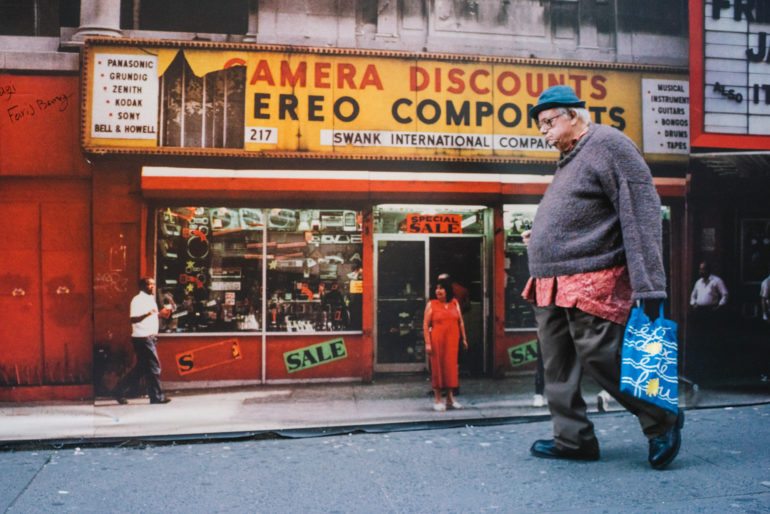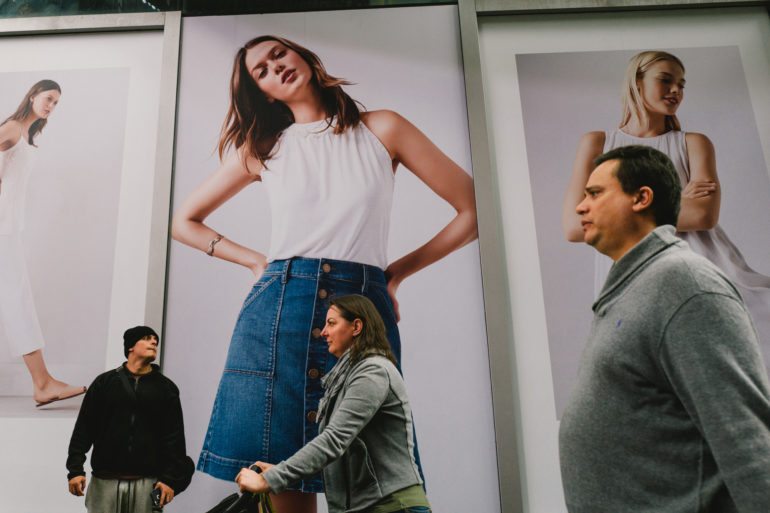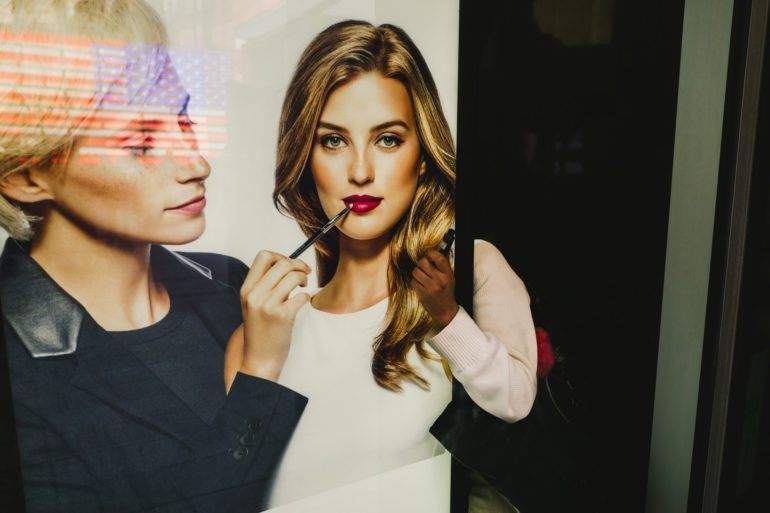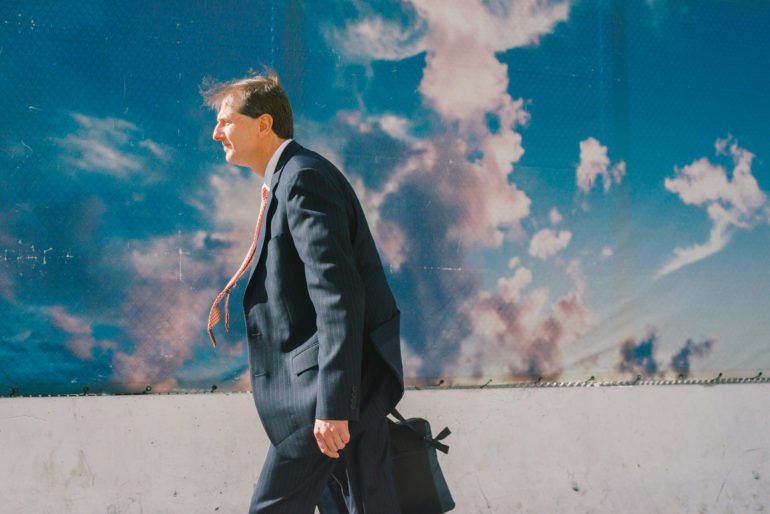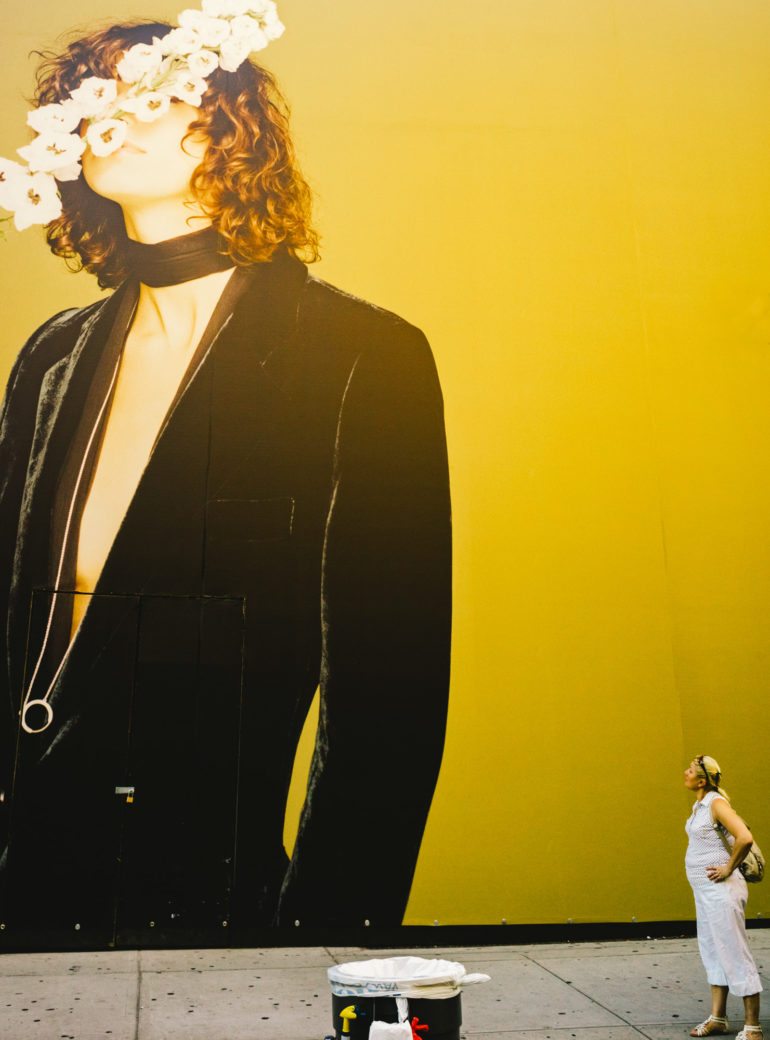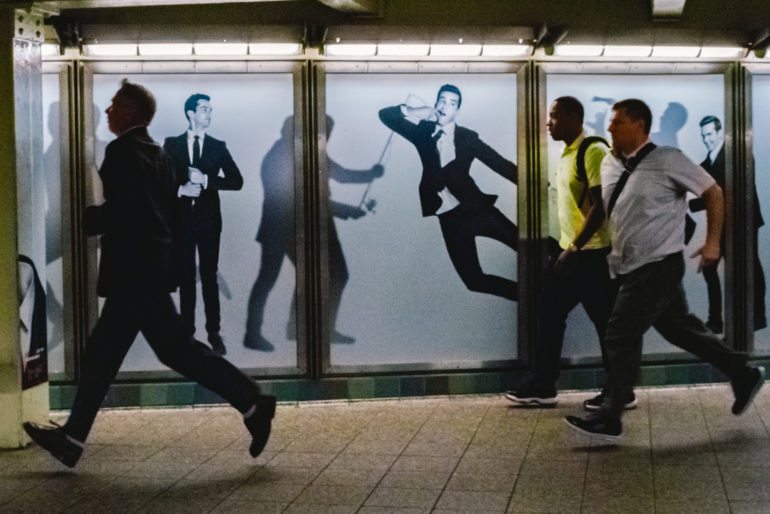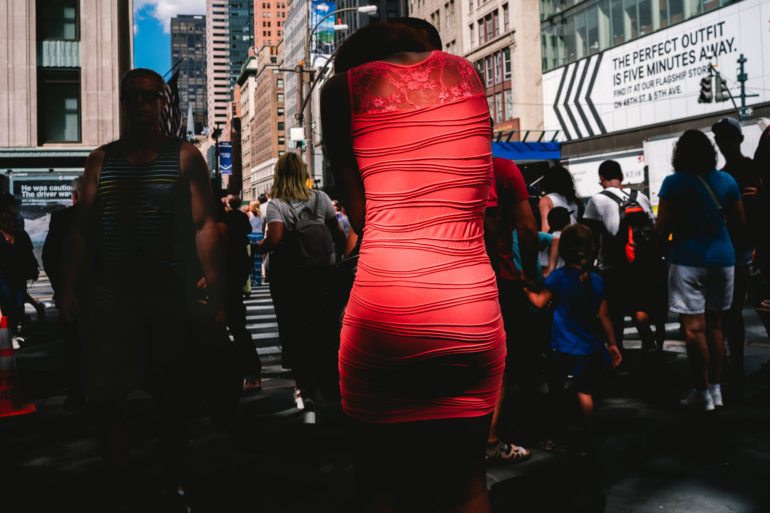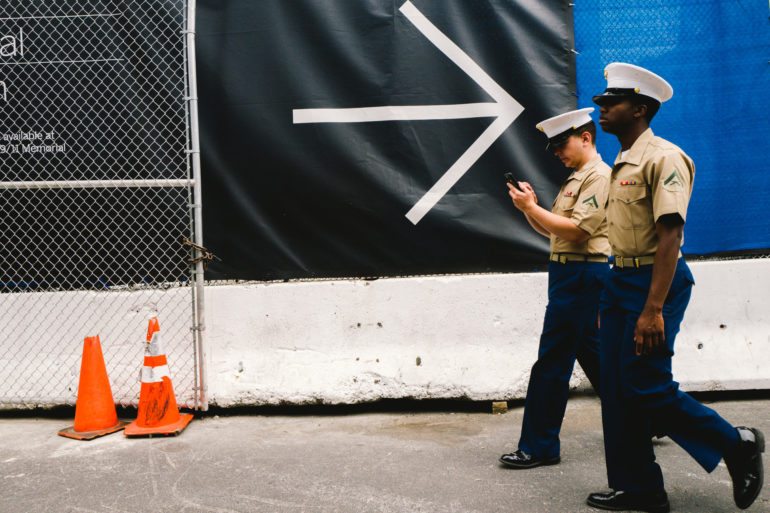All images by Jonathan Higbee. Used with permission.
Street photography isn’t obviously the act of documenting every day occurrences in public as they happen–but one of the biggest challenges that everyone who calls themselves a street photographer faces is getting their work out there. Photographer Jonathan Higbee never let that slow him down.
He loves gear, but he never let it slow him down or cripple him. In fact, he’s been fighting a struggle inside of him that only fuels his creativity and drive to succeed as an artist. The result: he actually makes taxable income from his street photography in addition to his other work. Indeed, Jonathan lives the dream of so many aspiring photographers out there.
And it’s not just us that recognizes it. The lead image of this story made the cover of the World Street Photography Awards 2016 book.
Phoblographer: Talk to us about how you got into photography.
Jonathan: I went to school in L.A. for writing and quickly found a job at a local magazine. After a year with the local publication, I somehow snagged a gig with a national magazine. It was the beginning of the traditional media decline, though, so the budget was tight.
This meant that I would both have to write and photograph for the travel stories I was assigned. Not a problem.
Photography was always another passion of mine. It took two travel features for me to prefer photographing to writing, which was no small feat. I began investing heavily in gear and photography education, and continued traveling the world, honing my craft on the job (and making bitter and jealous enemies in the process, lol) and falling more and more in love with making visual art. It unleashed the monster in me.
Phoblographer: What made you want to get into street photography?
Jonathan: It was the confluence of two forces that got me into shooting the streets: unbridled love for New York and Henri Cartier Bresson. Shortly after moving to the city years and years ago I was introduced to HCB. Through HCB’s work and legacy I was inspired to turn my passion for New York into a photo project, and I soon made a habit of grabbing my camera whenever I left the apartment. It was love at first click.
Photographing the streets and scenes of New York instantly felt like the best and most visceral way to make good on my intense feelings for the city. Also what kept me going was this zany sense that I was actually collaborating with New York. It might sound crazy or cliche, but I love that my street work is a joint effort made in collaboration with this city.
Phoblographer: You’re a very interesting photographer in that you’re both a creative and a documenterian. For you, how do you think the mindset of the street photographer inside you differs from the creative? Are there any parts of the thought process that you feel blend?
Jonathan: You’re totally right: there’s both confluence and divergence in a myriad of ways between my street work and my creative fine art projects. As my street style crystallized over the years, it became clear that I really enjoyed the conceptual side of the genre; this is what ultimately encouraged me to try my hand at conceptual fine art photography. I think this focus on concept is the most germane to these two genres I’m pursuing. For instance, when I’m out shooting the street and I come across an urban environment or structure or street art or ad — whatever — that makes me feel something deep inside, I may sit there the entire day considering which angle or FOV or time of day or even camera best capture my emotional reaction to the scene. I use much of the same thought processes when fleshing out a concept in my fine art work.
“…what kept me going was this zany sense that I was actually collaborating with New York.”
My street shooting style diverges from fine art when you factor in the unknown, though. I never know how New Yorkers will interact with the scenes I select and am often surprised and humbled by how these interactions materialize. Working in the studio, everything is obviously controlled — which is actually, for me, more stressful than leaving a lot to chance on the street.
Also, there are many times during a street photo walk when I, like most of the street shooters I know, just click and go. Interesting character or moment in front of me, click the shutter, keep moving. This sort of muscle-memory street zen mindset is very liberating, and completely antithetical to how I work in a studio right now. Unfortunately.
Phoblographer: Your work is done mostly in color and it seems like what you tend to do sometimes is find something interesting in the environment and then wait for something cool to interact with it in a photogenic way. Would you describe this as part of what you do or are you just that good at finding rad moments?
Jonathan: I can count on two fingers the times I’ve stumbled upon a rad moment as it was unfolding, haha! I mix and match my methods for shooting the streets pretty often, but this kind of work usually materializes when I stumble upon a particular confluence of elements and have a sort of sixth-sense reaction to it.
“I may sit there the entire day considering which angle or FOV or time of day or even camera best capture my emotional reaction to the scene.”
It could be the way the light is filtered down and reflected in Midtown, or a great color story in the inanimate objects at a particular intersection, or an advertisement or piece of street art that has a lot of kinetic potential. (This last example is the part of the equation that speaks to me the loudest on the streets.) When I stumble upon one of these “scenes” I’ll try to find the most inconspicuous spot possible to watch how people act on this “set.” I’ll make a few pictures to aid my memory, go home, look at the shots and think about my best positioning to capture the decisive moment.
Then, I’ll go back to the scene at the optimum time, hang out and wait for magic to happen. It’s not unheard of for me to go back to the scene on multiple days over a few weeks’ time (waiting for up to a few hours each time) hoping for a decisive moment. Sometimes I get the shot, sometimes I don’t and whatever ephemeral element I was attracted to (the ad, the mural, the construction scene) is forever gone. Walking away with nothing after investing so much time is difficult to manage, but then those other surreal street moments that I’ve been able to capture make it all worth it.
Phoblographer: What are your general policies when it comes to photographing people in the streets? Some photographers refuse to shoot from the hip for example and others will never photograph the poor. It seems like the people in your scenes really aren’t paying you any attention.
Jonathan: I try to avoid any constrictions when making street photography. I shoot both from the hip (though will often use the camera’s monitor to compose) and with the camera up to my eye. I generally prefer to remain unnoticed, but if that doesn’t work out I profusely smile and raise my hand politely to let a subject know that yes, they’re right, I did take a picture of them.
I think the key to photographing those in need without their knowledge is to avoid doing it in an exploitive way, which can be difficult. I personally don’t do it because my street photography focus and style is elsewhere right now, but I certainly feel that poverty, mental illness and homelessness have places in the conversations that street and documentary genres inspire.
I can’t say for sure, but I believe the subjects in my scenes aren’t aware they’re subjects in my scenes. I think New Yorkers are inoculated against considering the actions of strangers around them, unless there is potential for danger or a giant flash bulb is fired in their faces. Even tourists don’t seem to notice me running around lining things up. The young guy in my “Times Square” image (holding a blue camera against a blue triangle back drop with a girl in the background) was too busy getting his own perfect shot of Times Square to realize that a crazy person kept dashing back and forth mere feet away.
Phoblographer: How have you dealt with altercations on the street?
Jonathan: On the other hand to my previous answer, there have been times when folks have noticed me. They’re congenial 99 percent of the time. I smile and say something cheesy like “your outfit is amazing!” to defuse and they smile and walk away. But there is one time the situation turned confrontational.
“I think New Yorkers are inoculated against considering the actions of strangers around them, unless there is potential for danger or a giant flash bulb is fired in their faces.”
Last year in Chinatown a vendor mistakenly thought I was taking his picture. I wasn’t. A shopper three people away caught my attention. He physically stopped me and demanded I show him my pictures. Though I didn’t have to, I obliged (probably because he was wrong, haha). Instead of apologizing, he became even more arrogant, warning me that I “shouldn’t be photographing people.” Then he asked if I was “from here.” (I still don’t know why that mattered). I told him if he was so concerned to call the police and I’d be happy to wait with him. He just shook his head, called me a few names, and I left, trying to not let it ruin my day (which, with my anxiety, is nearly impossible).
Phoblographer: What gear do you use typically to get out there and shoot?
Jonathan: I usually go for the Leica Q when I want to shoot the streets. I’ve gone through a variety of gear over the years to find the perfect equipment for both my style of shooting and esthetic, from Ricoh GR to Olympus to Fuji x100 series, and the Q is the best fit for me.
When I want to go analog I used to go with a Leica M6 and 28mm elmarit, but that was stolen last winter, regretfully. But it’s okay — I decided to try the fabled yashica t5 because of it and LOVE the camera. For medium format film, I sometimes lug a Hasselblad 500 CM with a 50mm lens — though, for obvious reasons that setup is not ideal for the street.
Phoblographer: You’re a street photographer that has deservedly been awarded a number of notable recognitions. You’re obviously shooting, but then how do you go about making it as a street photographer? A lot of it is print sales, marketing, licensing, right?
Jonathan: Why thank you! It’s taken years to even feel like I’m on the cusp of making it. But it’s definitely been a hustle and a full-time job. Marketing is a significant part of the pie, and for creatives like us photographers, isn’t always the most exciting aspect and reality of the business. But, we all use social media every day as it is, so adding a little extra time to promote our photography on places like Instagram, Tumblr, FB, Twitter, etc. can pay off in the end. It has for me. I’ve been offered a lot of my press and features from sharing on social media, and, now that I have a medium-size print studio in my apartment, make the majority of my print sales there as well.
Obviously the dream is to “make it” enough that an agency or manager can take over the more businessy side of things, freeing me up to focus on the work. I fell in love with the art of printmaking, though, and believe that I always want to be hands-on with fulfilling orders for the amazing collectors I’ve been so lucky to work with.
Another large part of the equation for my moderate success is photography contests. I’ve won a few, including garnering the cover spot for the World Street Photography Awards’ 2016 book. You have to be careful and diligent in ensuring the contest you’re entering isn’t a scam or won’t steal all the rights to the photos you’re submitting. But after entering them regularly and intelligently, I can say with certainty that I wouldn’t be even where I am today if it weren’t for competitions.
Phoblographer: If you can imagine yourself one year from now as a photographer, where are you in the space of things and how did you get there? IE, what are your goals as a photographer for the next year and how do you plan on achieving them?
Jonathan: One of my big early goals was to show street work in a gallery. I get to check that off the list since the World Street Photography Awards’ annual show opens July 21 in Hamburg, Germany, and my “Times Square” shot will be the main display. So, now I’m further focusing that goal to a solo show for my street work. It’d be great to get that and to find gallery representation here in New York at the same time.
Strong work definitely plays a role in achieving this goal, but, from the advice I’ve been given by repped artists, it’s really all about networking. I struggle with social anxiety, which makes networking really hard, but I want it bad enough that I force myself to show my face at events and hand out as many business cards as possible.
I envision my most popular street images to be consumed by folks as huge prints and hung on a wall, but a book deal is also a primary goal that I want to check off the list in the next year. It’s very early, but I have a few publishers interested in my two main street projects, Consumed, which is seen here in this story, and my minimal urban abstract work. If luck is on my side, I’ll have two books this time next year. To get there though, I need to have about 100 strong images in each series to pick from, most of which have to be presented unpublished.
This is hard, especially when we as photographers have to maintain our social media presence and interest by sharing new work. But I’m out shooting, tirelessly, every day, loving every second of it, so I’m confident I’ll be able to present mock books to interested presses by the end of the year. Keep your fingers crossed for me.


